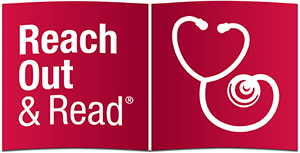Link to full text: https://publications.aap.org/pediatrics/article/154/6/e2024067417/199968
Access: FREE/Open Access
Publication year
2024study description
Quality Improvementobjectives
While the FMP was updated in 2022 and remains the AAP's primary resource for guiding family media practices, this article explores it’s background and the research needed to evaluate its effectiveness and explore opportunities for improvement.outcomes evaluated
Evaluate FMP effectiveness and explore opportunities for improvement.methods
In 2020, >200 parents on the HealthyChildren.org Virtual Parent Panel completed surveys. They were asked to share their opinions of the use and features of the FMP, current media management strategies, as well as their comfort and confidence in managing their family’s media use after using the tool. After this assessment, the AAP digital communications team led the review and revision effort. They collaborated with 3 pediatrician content experts (J.R., S.T., M.M.) from COCM to review the state of the current evidence and the survey data. This information helped the team to prioritize enhancements, features, and functionality of the tool. During the revision process, input was sought from other COCM members and the Faminum team, as well as from collaborators at Common Sense Media, a nonprofit focused on providing information and education related to digital media.sample size
N=>200 parentsmeasures
Parent Report Survey: Parents were asked to share their opinions of the use and features of the FMP, current media management strategies, as well as their comfort and confidence in managing their family’s media use after using the tool.
results
The new tool also allows users the ability to create an account to be able to save and revisit the FMP over time. The FMP, now available in English and Spanish, includes video tutorials on how to use the plan, in addition to setting up safety settings. The revised tool was also created as a progressive Web app, which allows the option to use the tool like a native application. The FMP can be installed on a home screen or taskbar, and can be used offline for a fully mobile optimized experience. A second priority for FMP updates was to enhance the transparency of the recommendations. Alongside available FMP rules and guidelines, additional explanations and rationales are now provided so that families can consider whether the rule meets their goals. Each FMP recommendation, when clicked, reveals a dialog box giving reasons why this recommendation was made and the evidence behind it. A final priority was to provide strategies and implementation tips for rules and guidelines, modeled off Faminum content. This approach allows families to reflect on their activities and use these practical tips to problem-solve around their media use.conclusions
This article outlines the development, assessment, and refinement of the FMP. It is our hope that this background information will enhance transparency about this tool, and promote engagement by pediatricians toward supporting healthy media use for families.limitations
A much-needed area of future opportunity for the FMP is to enhance interventional research, and there are several areas of potential opportunity. A first key area of future research is to study the effectiveness of the FMP. These studies may include the effect of the FMP on rule development and engagement within families, particularly which rules families find most feasible to maintain over time. Additionally, research on the effectiveness of the FMP on media-related outcomes such as physical activity, sleep, or mood is needed. A much-needed area of future opportunity for the FMP is to enhance interventional research, and there are several areas of potential opportunity. A first key area of future research is to study the effectiveness of the FMP. These studies may include the effect of the FMP on rule development and engagement within families, particularly which rules families find most feasible to maintain over time. Additionally, research on the effectiveness of the FMP on media-related outcomes such as physical activity, sleep, or mood is needed.Related
